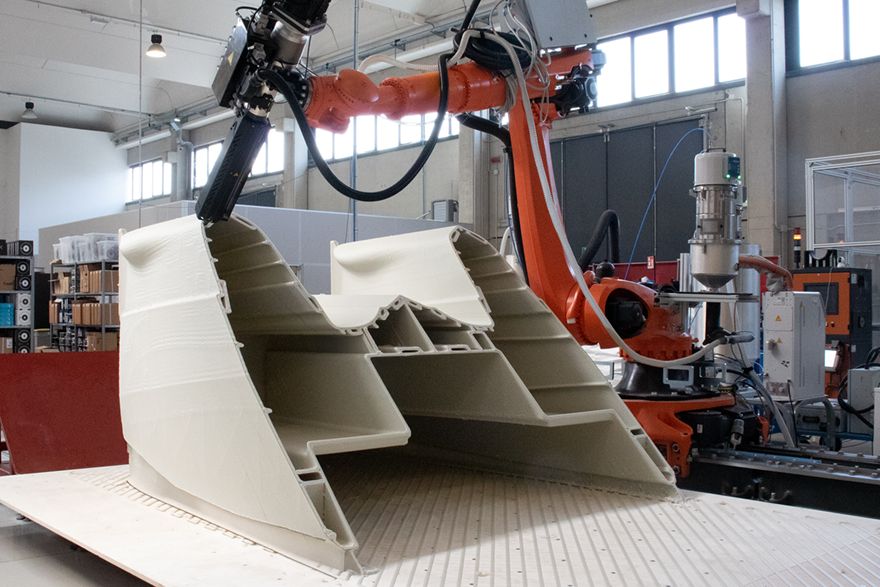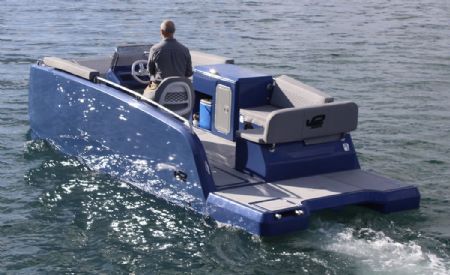
Spanish company V2 Group, which specialising in the design, engineering, and large-format 3-D printing for nautical and naval applications, and
Caracol AM, an Italian leader in advanced large-format 3-D printing technologies, are celebrating a significant technological milestone — they have successfully developed the first functional 6m-long monolithic catamaran for open waters.
The revolutionary new boat was produced using robotic 3-D printing technology, and the aim of the project is to develop a product that can be industrialised and scaled up; it involved attentively researching the full process — from design to materials, to production and post-processing with the requirements needed for the naval industry.
Large-format 3-D printing technology is transforming the marine sector by offering competitive advantages such as highly customisable designs, efficient material usage, and a significant reduction in environmental impact. This new boat represents a tangible example of how advanced 3-D printing processes can accelerate production times, minimise material waste, and enable the creation of high-quality floating structures and boats tailored to the growing demands of a global market.

Notably, this project was conceived with a long-term vision, meticulously analysing every step of the process to lay the groundwork for future industrialisation of such boats. From material selection to the optimisation of 3-D printing times, assembly, and testing, every aspect has been carefully refined to identify the key elements needed to scale production efficiently, sustainably, and economically.
This strategic approach is crucial for turning the technology into a widely applicable solution in the marine sector. This achievement not only demonstrates the feasibility of robotic large-format 3-D printing but also establishes the foundation for a new era in the manufacturing of boats and nautical components.
V2 Group and Caracol AM are committed to the continuous improvement of this manufacturing approach to broaden its applications in this sector, including transitioning toward the industrialisation of the process. This will pave the way for a more scalable, sustainable, and accessible production model within the sector.
The collaboration between these two European companies strengthens their leadership in nautical and naval innovation, positioning 3-D printing as a key solution to tackle the future challenges of the industry. With a clear focus on industrialisation, the potential of this technology to transform nautical production is virtually limitless.